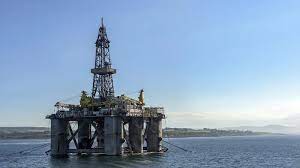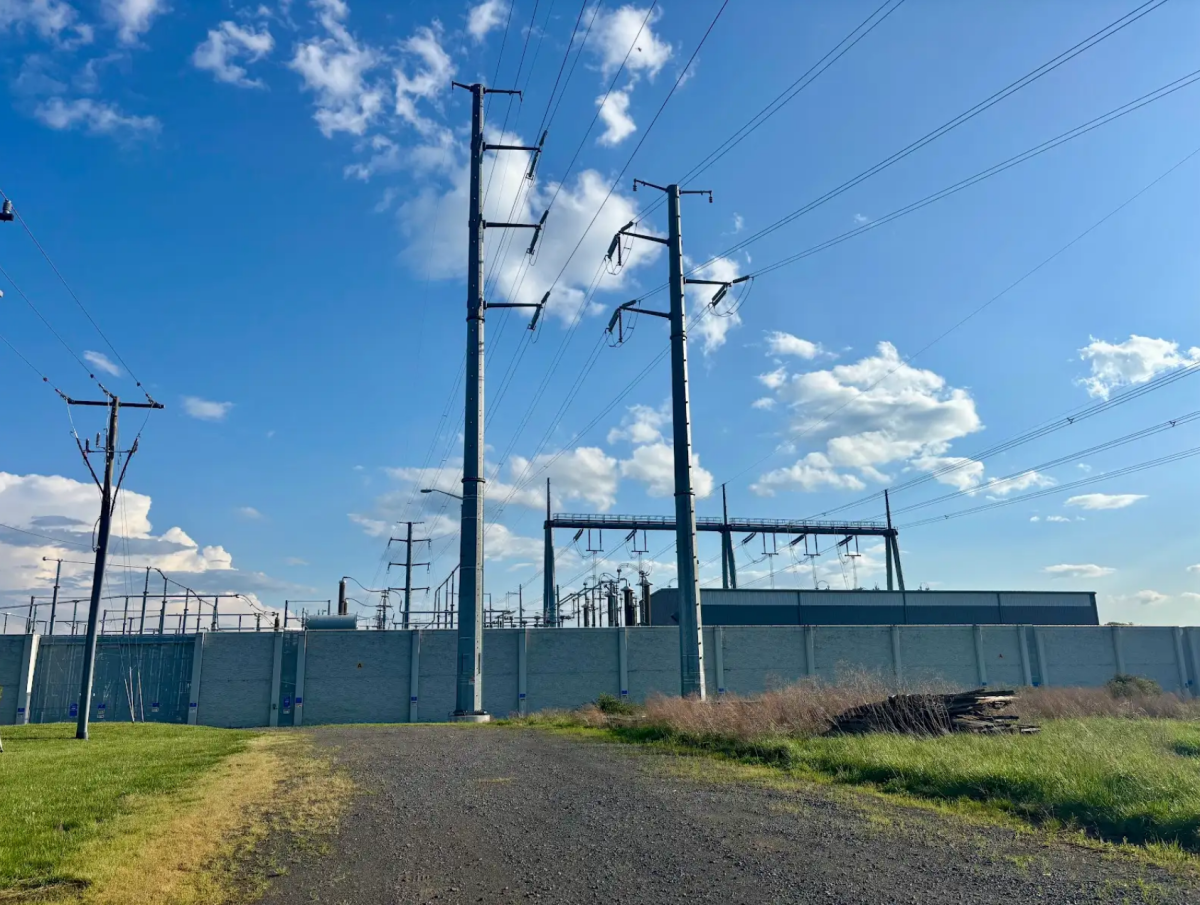Willow Project Achieves Total Climate Chaos

Photo from karmactive.com. Licensed under CC0 1.0.
An oil drilling and natural gas station is shown positioned in the ocean currently gathering resources that can be used as energy in the future. This is one of the 17 primary oil companies within Alaska.
March 24, 2023
Originally proposed in 2020 by the Trump administration, the Willow Project is a drilling venture set to last 30 years in Alaska’s North Slope Petroleum Reserve. This drilling project is proposed to carry 180,000 barrels of oil a day and will be conducted by the increasingly infamous petroleum refinery ConocoPhillips.
Although this project will supposedly bring economic benefits to the Alaskan citizens such as new jobs, a new source of income and will possibly reduce tax liabilities, the Willow Project will cause major cataclysmic effects on the climate and the atmosphere surrounding Alaska.
According to Sciencing.com: “Oil drilling is the process by which tubing is bored through the Earth’s surface and a well is established. A pump is connected to the tube and the petroleum under the surface is forcibly removed from underground.”
Although oil drilling has been a popular source of extraction for roughly 164 years, the process of drilling holes into the Earth’s surface and breaching the oil zone underground causes harmful gases such as excess carbon dioxide, methane and nitrous oxide to enter the atmosphere. These gases cause a “greenhouse effect” to take place where potentially harmful gases trap heat and wrap around the Earth’s atmosphere, therefore causing the overall temperature of the climate to rise.
SANDAG (San Diego Association of Governments) consultant for Sustainable Transportation Services Melina Lasley felt that the overall contribution of the Willow Project could impede climate goals that were previously stated.
“Personally being someone who cares about the environment greatly, I see the overall impacts of it being negative,” Lasley emphasized about the Willow Project. “It is a huge step backward in terms of the carbon reductions we’re trying to achieve and those in the Biden administration agreed that they would be doing.”
President Joe Biden committed to “reaching 100% clean electricity by 2035 and signed an executive order requiring federal agencies to procure 100% carbon pollution-free electricity by 2030” according to The White House. However, Inside Climate Change noted that the Willow Project would contain electricity coming from a 98-megawatt natural gas-fired power plant, producing fossil fuels and greenhouse gases. This will cause the region to warm twice as fast as the continental US and will set back Biden and the U.S.’ overall proposition to lower the effects of climate change.
Lasley recognized that the aftermath of major projects similar to the Willow Project may result in negative consequences that are often difficult to determine.
“The unfortunate thing about climate change is that it creates negative externalities on basically the whole world,” Lasley said. “This means that what I do here in San Diego, by driving my car, for example, affects everyone. The greenhouse gas emissions that are produced get mixed into the atmosphere all over the planet.”
Sage Creek High School marine science teacher Courtney Goode, described the major changes being seen due to global warming and how the possible one-degree rise in temperature could be disastrous for the planet.
Goode explained, “When someone is sick, there is a degree difference between 100 and 101 or 102. That one degree becomes the defining factor between life and death – it becomes our body’s way of telling us when something is wrong. This is our planet’s way of telling us that something is wrong.”
Goode also considered the aspect of the Willow Project that holds the most significance and is the least likely to be acknowledged: how will the Willow Project affect the animals in Alaska?
“The bigger this area gets, the more potential for animals and humans to conflict which unfortunately the humans will always win,” Goode stressed. “So as we infiltrate what should be a well-established preserve and protected area, the animals in all sorts of places then become reliant on people. We were not there first.”
For example, the caribou migration takes place from May through September and can lead onto 400 miles nearing Teshekpuk lake, which will be interrupted due to the frequency, size and placement of the project.
While Alaskan animals will be confronted with noise and pollution, so will the native communities. According to CNN, “Nuiqsut Mayor Rosemary Ahtuangaruak and two other Nuiqsut city and tribal officials said that the village would bear the brunt of health and environmental impacts from Willow. Some villages get some financial benefits from oil and gas activity but experience far fewer impacts. Nuiqsut are at ground zero for the industrialization of the Arctic.”
In 2020, the proposition for a lawsuit by Trustees for Alaska against the Trump administration in regard to the Willow Project was revisited against the federal government and Biden administration. Trustees for Alaska are known to advocate for the ideas and rights of Alaskan Indigenous groups.
To gauge public opinion and advocate for change, petitions all over the country have been formed. The most popular one called “Stop the Willow Project,” has well over 4.5 million signatures and continues to grow.
However, when the project was approved by the Biden administration, the petition had roughly 2 million signatures and was disregarded by government parties when the matter arose.
Dahlia Nichols, president of the SCHS environmental club, believes that petitions could enact change when the dispute remains civil.
“They are a good way to measure public opinion, especially if it’s getting millions of signatures. It’s a really good way for the government to see what people are thinking about a subject,” Nichols said regarding petition advocacy. But when the matters become strictly political other courses of action can be taken for more effective results. “I think the better way for people to reach out to the government would be to contact a party such as the democratic or republican party or other lobbying organizations like Greenpeace.”
Overall, the repercussions of the Willow Project will cause a chain of events starting with the tragic release of hazardous gases into the environment. As the overall climate temperatures rise because of the greenhouse effect, weather patterns will become unidentifiable and possibly violent. The heat will cause glaciers and ice caps to melt which will then cause sea levels to rise and destroy ecosystems inside the water and out. The air pollution will worsen and smog will possibly cover cities in time.
After all of this tragedy, one factor remains constant. Hope is not lost.
Lasley accentuated the importance of reaching out to congresspeople, voting, volunteering and yes – petitioning until the people’s voices are heard all over the world. And when all else fails – try and try again.
“If you are passionate about something, keep advocating for that passion,” Lasley said. “No matter what obstacles or hurdles come into your path, as much as you think that your voice doesn’t matter or that it’s too small – there are millions of people with the same passions and desires to change the world who just need to work together.”
With trials and tribulations to come, the Willow Project has been set into motion, but with the correct influence and strength, the project has a chance for reformation. Starting with simply signing a petition or writing a letter to a local member of congress, could be the beginning of real change in the world.
Working together for the greater good is what matters most – and ending the Willow Project is that greater good.
This story was originally published on The Sage on March 23, 2023.















![Finishing her night out after attending a local concert, senior Grace Sauers smiles at the camera. She recently started a business, PrettySick, that takes photos as well as sells merch at local concert venues. Next year, she will attend Columbia Chicago College majoring in Graphic Design. “There's such a good communal scene because there [are] great venues in Austin,” Sauers said. “I'm gonna miss it in Austin, but I do know Chicago is good, it's not like I'm going to the middle of nowhere. I just have to find my footing again.” Photo Courtesy of Grace Sauers.](https://bestofsno.com/wp-content/uploads/2025/05/Grace.png)


















